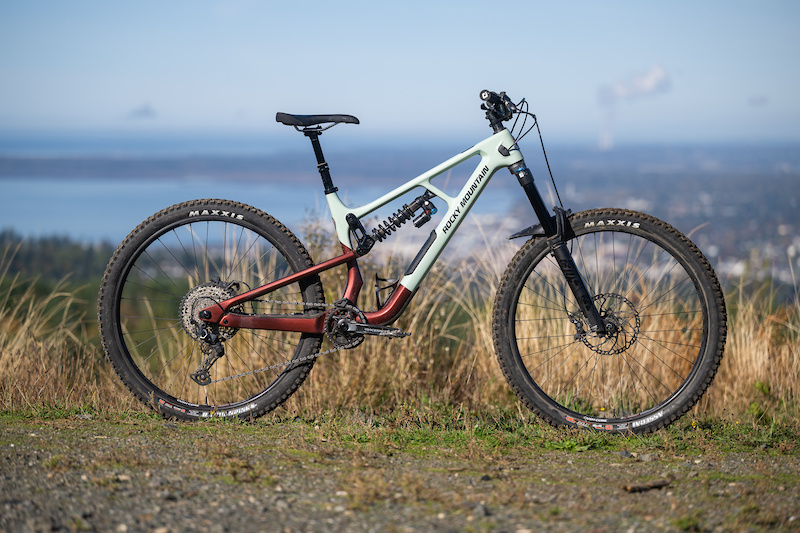Review: Rocky Mountain Slayer C50 - Pinkbike

Review: Rocky Mountain Slayer C50
Descending
The Slayer's bossing slots into what I'd call the 'classic freeride' category, the one that emerged in the early 2000s, back by enduro was a thing. That's when freeriding was all throughout finding a way down extra-technical trails, rather than pursuits flippy-spinny things on massive manicured jumps. Sure, the Slayer can jump just fine, and someone that's not me could do flips and spins on it, but it feels most at home on steeper, natural trails.
My best rides on the Slayer were the steepest ones. The slack 63-degree head Wangles and resulting wheelbase means there's no shortage of requisition, and 'safe' is the adjective the comes to mind for the way this bike feels on rowdy, fall-line trails. There's little risk of feeling like you're repositioning to be tossed out the front door, and its bossing is the opposite of nervous. The Slayer does feel a little taller than something like a Santa Cruz Nomad or Nukeproof Giga – those two bikes both have a touch top tube and bottom bracket height, and the weight is centered touch in the frame, making them easier to carve above turns.
Even with that long and slack geometry, in the Whistler Bike Park the Slayer never felt especially fast – at times it felt like it was tying sucked into holes rather than skimming over them. That trait was also evident on slower like a flash, stepped sections of trail – there wasn't much abet from the shock, which made the bike feel over-active in ununsafe scenarios.
I experimented with adding more compression to help the bike sit higher in its proceed, which did help, but the overall feel of the rear suspension was 'busier' and less supportive than I would have current. A firmer compression tune could be the answer here, or possibly an air apprehensive – I didn't have any harsh bottom outs, but the increased ramp up of an air apprehensive could potentially give the Slayer a more cohesive suspension feel.
29" vs. Mixed Wheel
I started off the test calls with the bike in full 29” mode, and then switched it to mixed wheels, which requires a different shock link. That mixed wheel setup above up being my preferred configuration, and I'm honestly not sure why Rocky didn't spec the whole size blueprint with mixed wheels. The smaller wheel helped make the Slayer feels less like a lumbering beast, and while I'd still hesitate to call it appealing, it did add a little pep to its bossing, especially on tighter trails.
I kept the chainstays in the 439mm setting, since I didn't come across and instances where I belief the back end felt too short. That said, riders who want to run SRAM's new Transmission drivetrain will need to run it in the longer 449mm position; that's the only setting that's UDH compatible.
https://www.gimmehow.com/2023/05/how-to-change-your-oil-tips-for.html